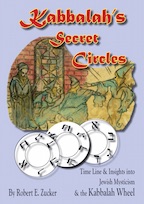Egyptian myths claim that ushabtis
are funerary figurines help do the work of the owner after they are
deceased. An Egyptian prayer is made to the statue to bring it to life.
Most shabti's are made of clay, some are wood carved. The power of dirt,
or clay, was believed to have life-giving properties. Read about theory on life from clay.
Ushabtis (shabtis), like golem,
are suppose to obey the orders of the owner. But these statuettes
animate to specifically serve the soul of the deceased- whose name is
carved into its chest along with the prayer to "carry the water" and "do
the work" in the netherworld.
The earlier shabti may have planted the cultural seed for the later golem and teraphim legends.
Author: Harry M. Stewart
This
book provides much information about the Egyptian shabtis, figurines
created to act for the deceased in the afterlife. The author explains
their manufacture in wood, stone, Egyptian faience and other materials;
he also traces their evolution from the Middle Kingdom to the Ptolemaic
Period. Inscriptions and spells are briefly discussed. This is a very
useful reference for students, Egyptologists and art historians. Click
image to see inside the book.
17th
- 18th Dynasty Stick Shabtis in the Petrie Museum and Other Collections
(Ghp Egyptology by Paul Whelan. This monograph represents the first
comprehensive investigation of the characteristically crude wooden
"stick" shabtis of the late 17th and early 18th Dynasties. Developed
from a case study of examples in the Petrie Museum of Egyptian
Archaeology and building upon scholarship that has until now focussed
almost exclusively on the importance of their inscriptions, the work
offers new perspectives on stick shabtis and their role in the cultic
milieu during a transitional period in ancient Egyptian history. Paperback: 160 pages. Publisher: Golden House Publications (May 30, 2007). Language: English
Ancient Egyptian Funerary Statuettes in European Private Collections ,
by Glenn James. This large volume presents a catalogue of 115 shabtis,
or funerary statuettes, held in private collections across Europe. The
study stands out in particular for its high-quality lifesize colour
photographs which illustrate the back and front of each shabti. The
catalogue is arranged chronologically from the Middle Kingdom to the
Ptolemaic period, includes transcriptions and translations of
hieroglyphic inscriptions, descriptions of condition and provenance and a
discussion of comparative examples and their location. The CD presents
full colour images of the shabtis. Hardcover: 264 pages. Publisher:
Cybele (December 31, 2002).
,
by Glenn James. This large volume presents a catalogue of 115 shabtis,
or funerary statuettes, held in private collections across Europe. The
study stands out in particular for its high-quality lifesize colour
photographs which illustrate the back and front of each shabti. The
catalogue is arranged chronologically from the Middle Kingdom to the
Ptolemaic period, includes transcriptions and translations of
hieroglyphic inscriptions, descriptions of condition and provenance and a
discussion of comparative examples and their location. The CD presents
full colour images of the shabtis. Hardcover: 264 pages. Publisher:
Cybele (December 31, 2002).
From Amazon.com, this collectible Statue Sculpture of the Egypt Ushabti Figurine. This shabti figure the finest details and highest
quality you will find anywhere! Made of resin and hand painted. Height: 9
inches. Length: 2.25 inches. Width: 2.25 inches. Crafted with Resin.
Weight: 2.5 pounds.
Ushabti Figurine. This shabti figure the finest details and highest
quality you will find anywhere! Made of resin and hand painted. Height: 9
inches. Length: 2.25 inches. Width: 2.25 inches. Crafted with Resin.
Weight: 2.5 pounds.
 These pages are excerpts from the book, Kabbalah's Secret Circles, by Robert Zucker. Read more sample chapters and download a free PDF sample compliments of the author.
These pages are excerpts from the book, Kabbalah's Secret Circles, by Robert Zucker. Read more sample chapters and download a free PDF sample compliments of the author.

 Shabti
(also called ushabti, or Shawabti) are magical, clay figure statues
produced in the early dynasty of the ancient Egyptian empire.
Shabti
(also called ushabti, or Shawabti) are magical, clay figure statues
produced in the early dynasty of the ancient Egyptian empire. 